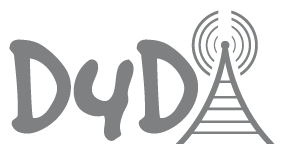Frequently Asked Questions
All the questions we get asked on a regular basis.This page will cover some of the basic ideas and questions you may have. If you do not see it, let us know and we will answer it.
Q: What IS DMR?
A: Digital mobile radio (DMR) is an open digital mobile radio standard defined in the European Telecommunications Standards Institute (ETSI) Standard TS 102 361 parts 1–4 and used in commercial products around the world. It is exploding in popularity in the Amateur (HAM) radio world
Q: Why is it so different from the way we talked before.
A: Well, for one, it allows 2 simultaneous conversations on the SAME piece of RF hardware at the same exact time. Before we only had one. These conversations (QSO’s) are totally independent and do not interfere with each other.
Q: So I have my Radio ID programmed into my radio.. Do I still have to ID?
A: YES!! Just because you are transmitting your callsign, does NOT make your transmission legal without identifying yourself by voice according to the rules. So, ID just like usual.
Q: I have been issued a new callsign… How do I get it updated in the Digital Database?
A: The first thing you need to do is visit RadioID.net then…
1. Put in a support ticket via the support menu.*
2. When entering a support ticket, please use your old callsign when it ask for “CALLSIGN”
3. We will then simply change your current callsign to the new one, all your ID’s will follow. REMEMBER… every other user on the planet will not see your new information until they update their personal radio database(s).
* If your Current License has NOT been Verified / Approved, you will be asked to provide a copy of your new License before it can be changed.
This is NOT optional, The system prevents admins from making callsign changes to unverified accounts.
Q: What is all this color code and time slots and talk group mumbo jumbo?
A: Lets answer this one item at a time.
1) Color Code is just a fancy name for what would be “CTCSS” or “PL” in the analog radio world.
2) Time slots are what makes DMR unique. Your transmit signal is broken into 30mS digital packets and the transmitter switches on and off rapidly. Doing this allows two signals to share the same channel at the same time. One on Time Slot 1 and one on Time Slot 2.
3) Talk groups are the group calls so those listening to that group number can hear you. People have to have that group programmed in their radio and listening on THAT group and THAT assigned Time Slot.
Q: How do I know what time slot and talk groups to use?
A: The repeater owner (be it a group, club or individual) has the final say on what Talk Group is used on what Time Slot. You need to go to them and only them to find the info. Too many “Arm Chair Quaterbacks” who do not know if any changes have been made to the system can steer you wrong.
Q: Why Doesn’t My Current Call Sign and Name Show Up On Other User’s Radio Displays?
A: This is a good question, and a common one.
If your DMR data is indeed in the online DMR database, ALL USERS of the database must load that information into their personal RADIOS. It is actually the radio itself that converts the ID into call sign and name information which shows up on the radio display.
If DMR users only update their radios a couple of times a year, they will obviously be talking to new users from time to time who aren’t in their radios database. They will only see your radio ID on their display. This isn’t your problem or something that the DMR networks can do anything about.
It is a misconception that call sign and name info shows up on radio displays automatically. It does not, unless the user is on a system that utilizes “talker alias” functionality. And talker alias functionality must be turned on in each users radio CPS for it to work anyway. Many DMR repeaters do not have the capability to pass talker alias info. Generally, only MMDVM repeaters and hotspots have this built in. Motorola repeaters and several other commercial repeaters will only pass along the radio ID and Talkgroup ID.
If you talk to someone that doesn’t see your call sign or name, simply remind them they need to update their radio’s user database via CPS the next time they have a chance.
